This review is dated 2009 but that’s not really true at all. Sure, I clicked the publish button back in 2009, but the only content was some photographs and a promise to update the review properly later. A decade passed… no review. Still, the years continued to roll by… no review. And finally, here we are living in the distant future of 2023, and here’s that review I promised. Surprise!
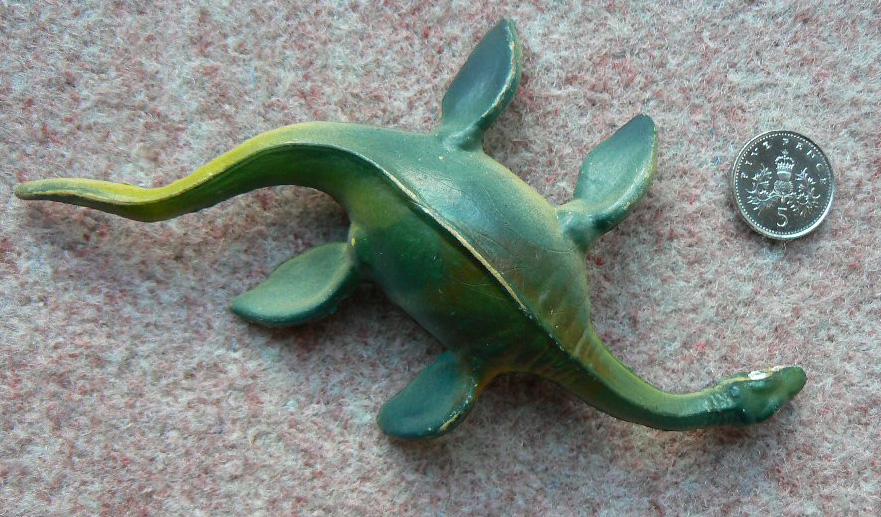
The pose and proportions of this plesiosaur figure suggest it was based on a painting of the plesiosaur Macroplata by the paleoartist Neave Parker (1910–1961). Parker was active during the 1950s and produced many paintings of prehistoric creatures in collaboration with the then British Museum (Natural History) in London. His artworks were featured in newspapers, books and postcards, so Macroplata may seem like a rather obscure genus to receive the spotlight. However, the animal was described and named by William Swinton, the palaeontologist who commissioned and guided Parker, so there’s an obvious connection.
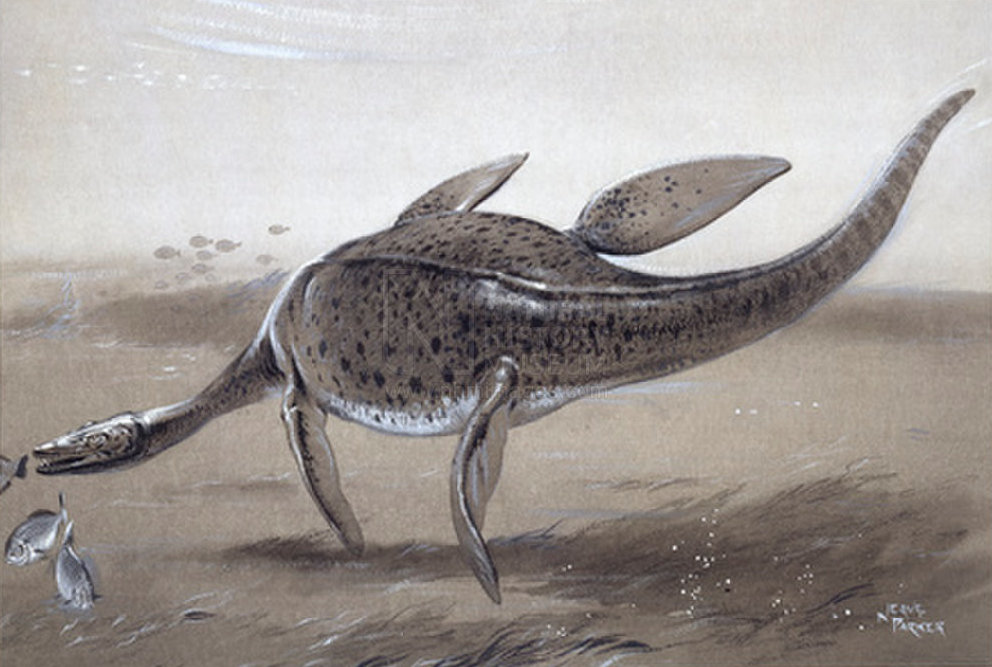
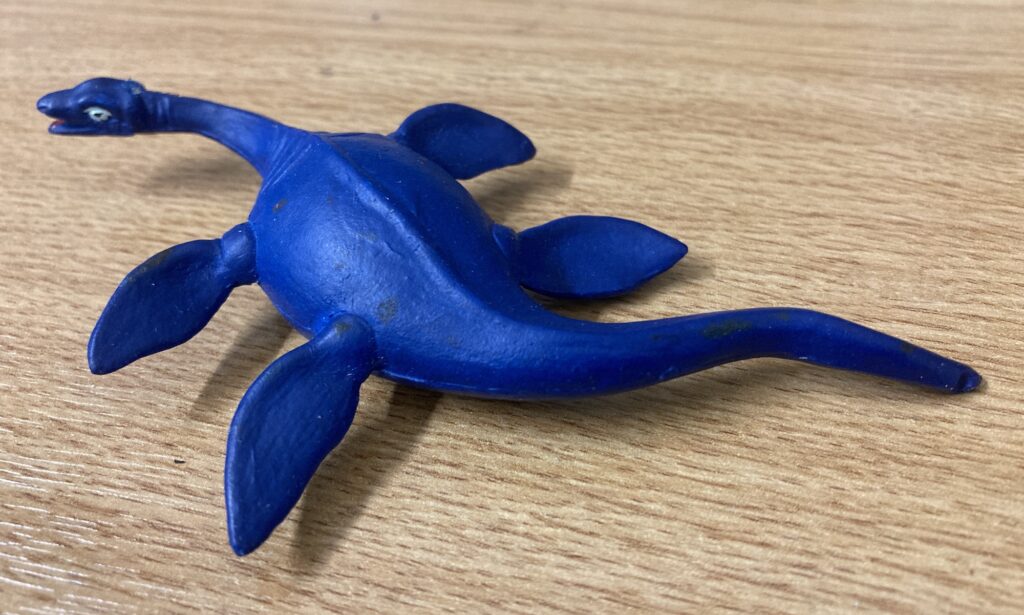
This toy continues to confuse collectors because there are multiple versions of it and its origin is shrouded in mystery. The photographs in this review include a green version marked ‘Dinocrats’. The consensus is this is the original version, but there are other versions marked ‘Toyway’, such as the blue version also photographed here. Toyway, established in 1982 under the name Martplay, and later Marmet, is the company that produced the Dinocrats line. The plesiosaur is also frequently discussed with reference to the company Inpro because of the similarity in scale, style, and provenance (i.e. the United Kingdom in the 1970s or 80s), but also because Toyway acquired Inpro moulds at some point and redistributed them as Dinocrats. However, no versions of the plesiosaur figure are known with “Inpro” markings, so it seems to be a later release produced by Toyway some time after the Inpro moulds had passed to them.
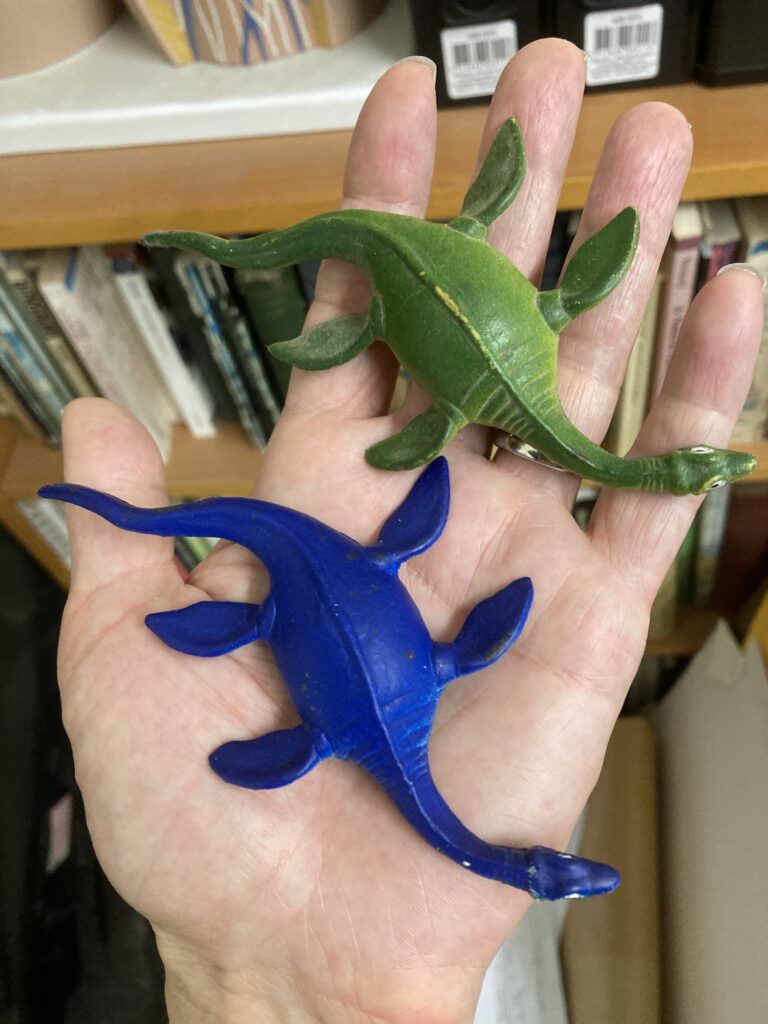
The ‘Dinocrats’ version is made of a slightly harder plastic than the softer ‘Toyway’ version, but the sculpts are otherwise identical. There are also several colour variants. For example, the ‘Dinocrats’ version seems to have been produced only in green, while the ‘Toyway’ version exists in green and blue variants. There are also differences between the markings on ‘Toyway’ versions, with some marked “China” and others marked “Hong Kong”. The ‘Dinocrats’ version has no country mark. The eyes in all of the variants are crudely picked out with a dollop of white paint and a black pupil.
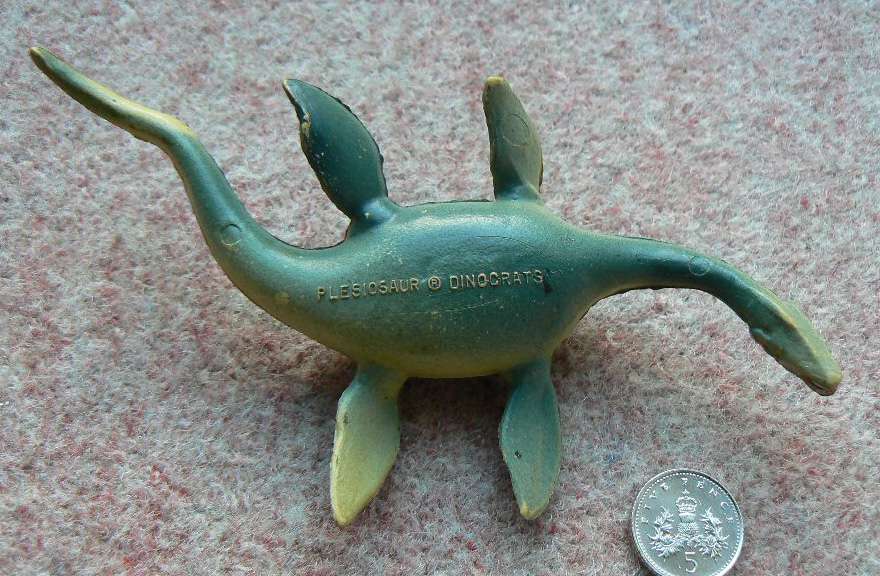
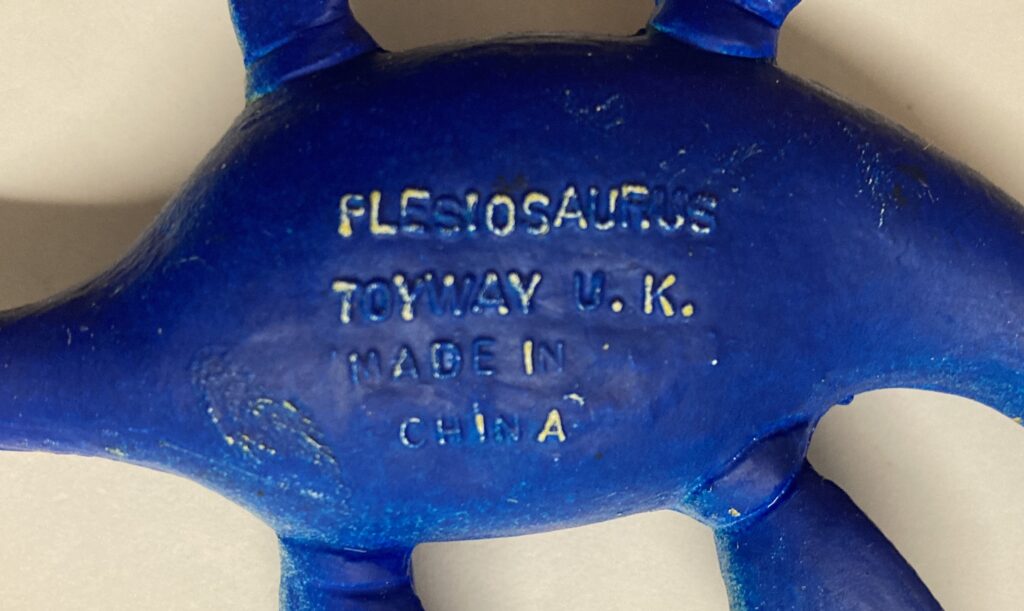
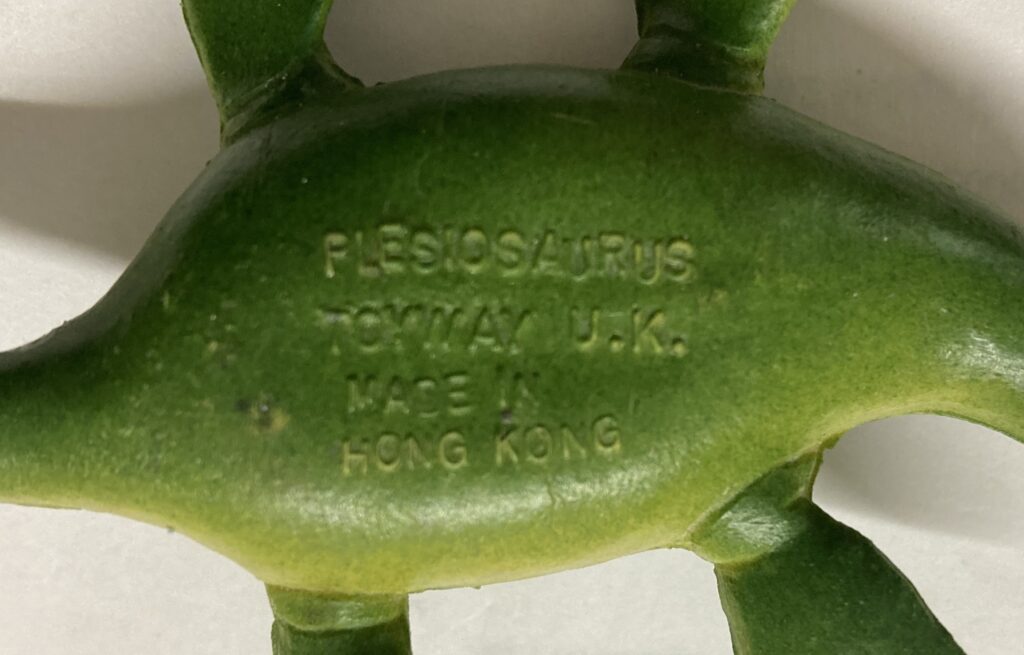
Macroplata was a rhomaleosaurid, a group of plesiosaurs with large heads and moderately long necks. The intermediate length of the neck in this toy is probably the only obvious characteristic that differentiates it from other more well-known plesiosaurs, the longer-necked Plesiosaurus and Elasmosaurus, and the much shorter-necked pliosaurs. Despite being able to pin down this figure to the genus Macroplata, the ‘Dinocrats’ version was marketed more generically as “plesiosaur”, while the ‘Toyway’ versions are stamped “Plesiosaurus”. So, I’m calling this figure Plesiosaurus in the review title.
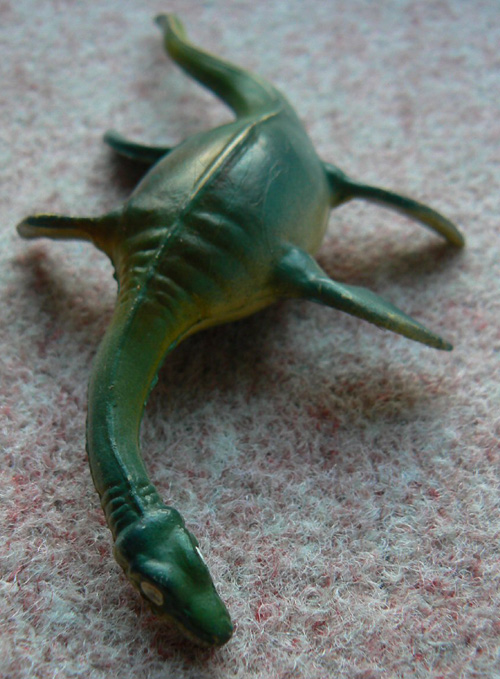
Broadly speaking the toy is rather accurate for a dated plesiosaur figure, especially for the time it was produced, around the 1970s or 80s. Back then, plesiosaurs were usually depicted with arched swan-like necks and deeply rounded backs, but the Dinocrats/Toyway plesiosaur has a much more modern appearance, with a relatively flattened back and its neck held out horizontally. The eyes are also in the correct position, about halfway along the skull. In other less accurate plesiosaur toys the eyes are positioned too far back. These accuracies in the Dinocrats model can almost certainly be credited to the cutting-edge (for the time) paleoart it was based on. The sinuous tail is unusually long but, again, so is the tail in Parker’s artwork. Still, I regard this as an inaccuracy.
Overall, this is an interesting toy with a curious history which is still being unravelled. Indeed, if any readers know of other variants of this figure please share your knowledge in the comments.
So, that’s my review of the ‘Dinocrats’ plesiosaur and it only took me 14 years to write! I hope you weren’t waiting.
Photographs of the green ‘Dinocrats’ version by Peter Smith. Contributions to a thread about Inpro on the Dinosaur Toy Forum were invaluable for this review.
Disclaimer: links to Ebay and Amazon on the DinoToyBlog are affiliate links, so we make a small commission if you use them. Thanks for supporting us!




Glad my thread came in handy re the Inpro/Dinocrats mystery Dr Dinotoyblog. I tend to think of it as an honourary Inpro in any case!
Really good to hear about the WE Swinton and Neave Parker link too. So, it’s (probably) a Macroplata – makes the figure more collectable I think. I’ll keep my eye out for a spare for you Halichoeres!
Thanks, I appreciate it!
Damn it all, now that I know it’s based on Macroplata art, I want one. Other than a pewter game miniature, I’m not aware of any other figures of the genus.
I think you’re right. It didn’t occur to me that Macroplata hasn’t otherwise been memorialised in toy form. It’s a genus that has special meaning for me because I worked on the holotype during my PhD and co-authored a 2010 paper re-describing it. Swinton may take credit for naming it in 1930 but his description was lacking!
In that case you gotta put some pressure on a company to make a nice updated version based on your description!
This is a very charming figure! I could see this displaying well alongside both Invicta and older Marx toys, with how it blends toy aesthetics with the paleoart reference.
I’m commenting on this review to bump it onto the sidebar, after 14 years I finally actually added a review to the ‘review’.
Such a fun looking figure, I kind of love the long tail.
thank you so much for this picture it really helped me understand what the loch ness monster MIGHT look like. We have to make a model of the thing for a english report and i needed to know what it looked like. So thank you for your pictures.